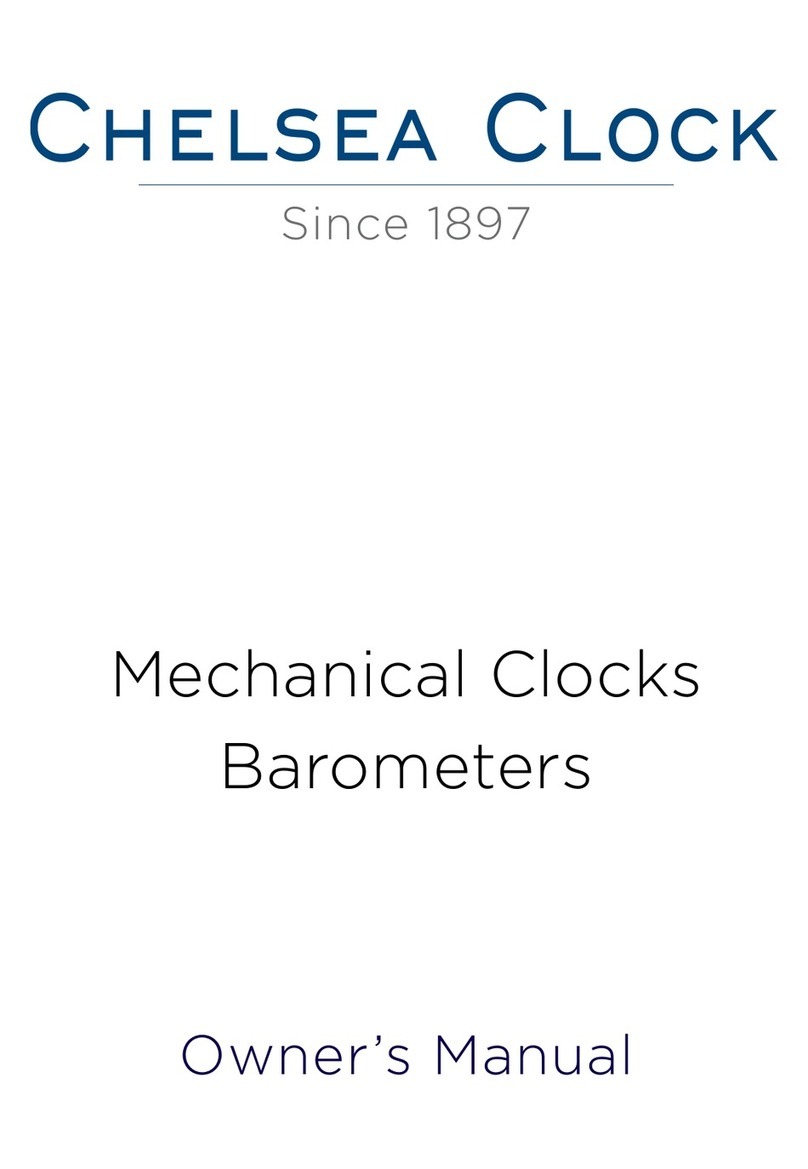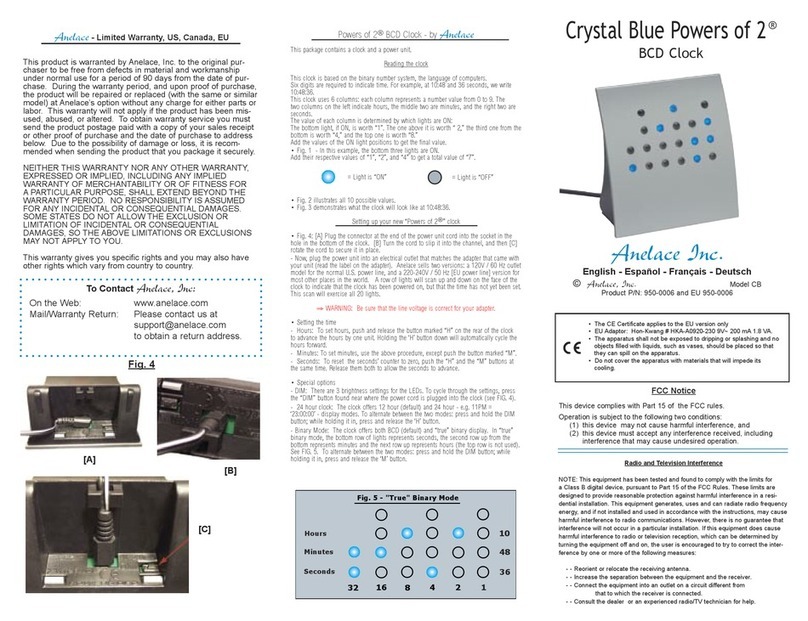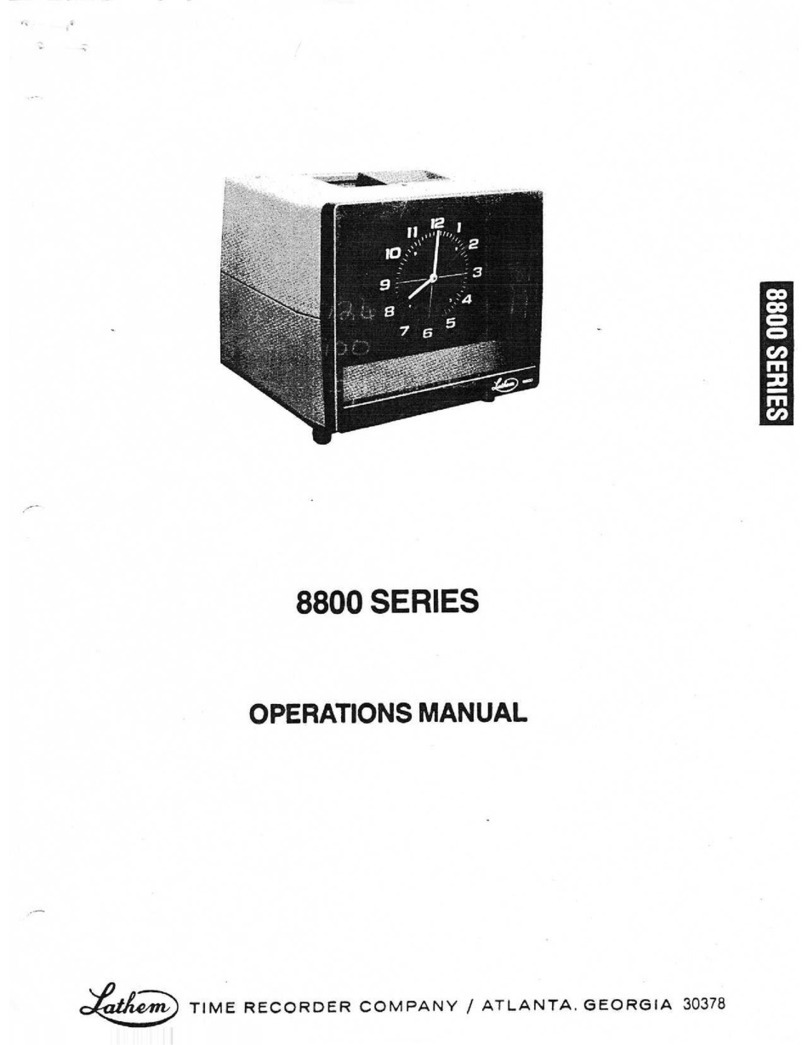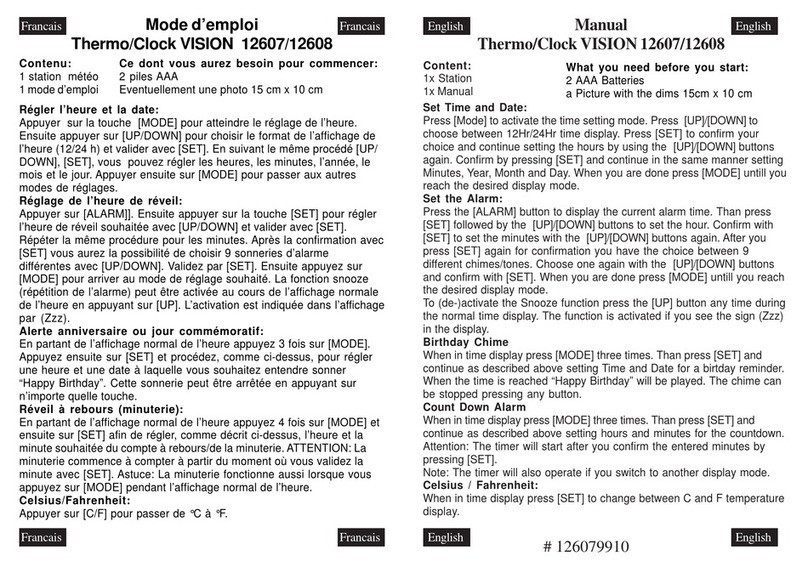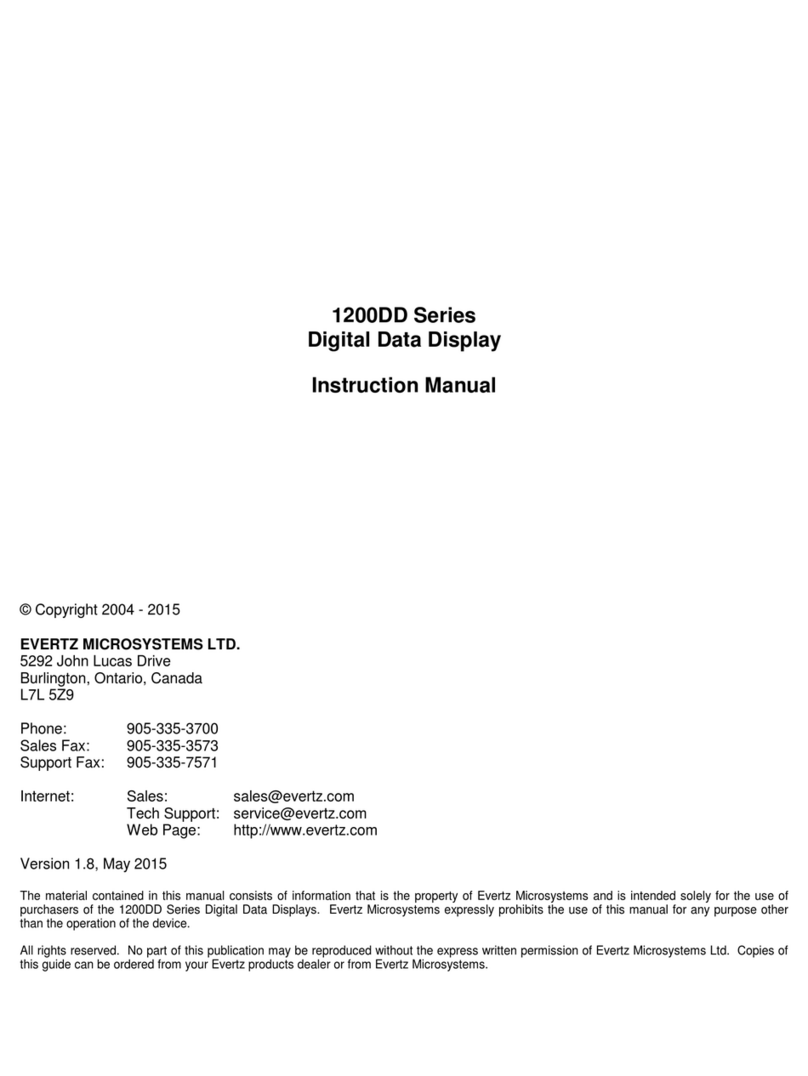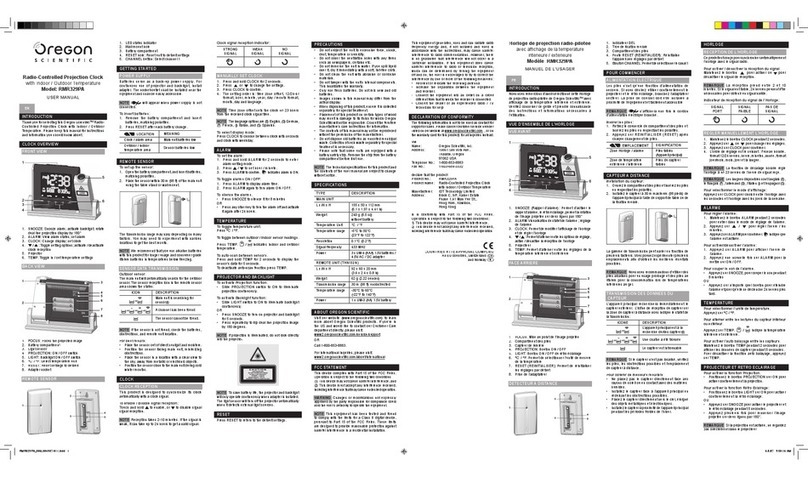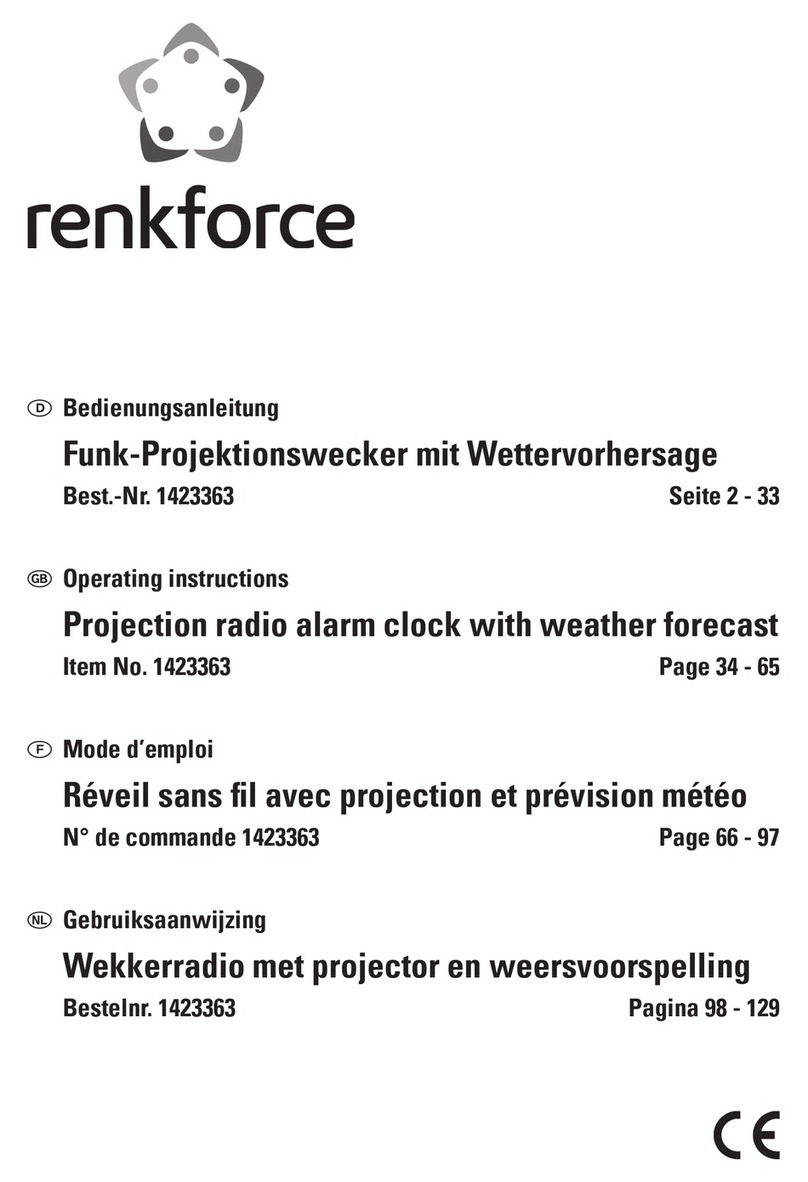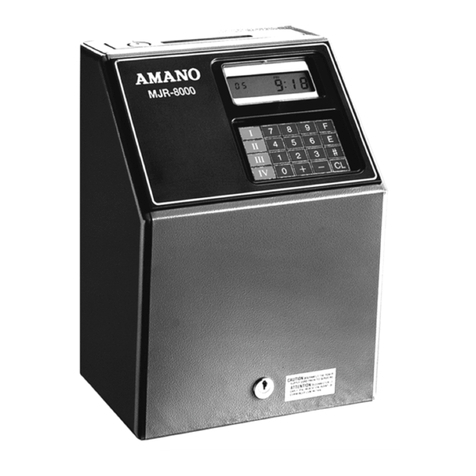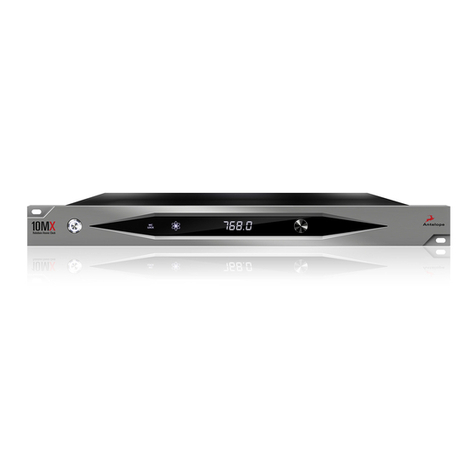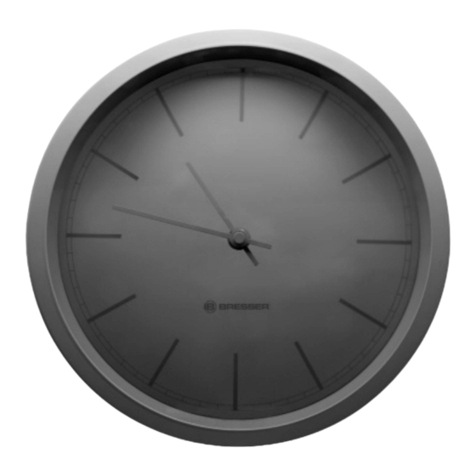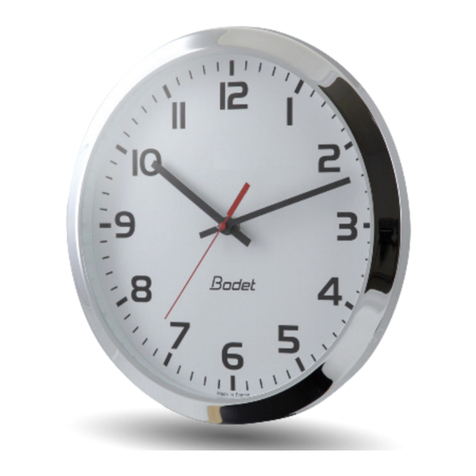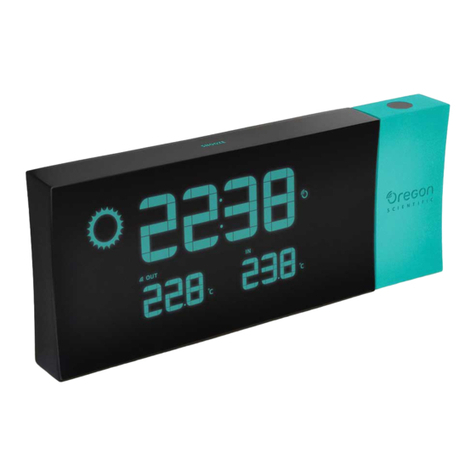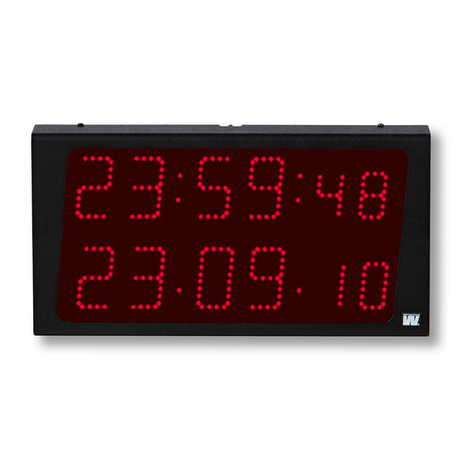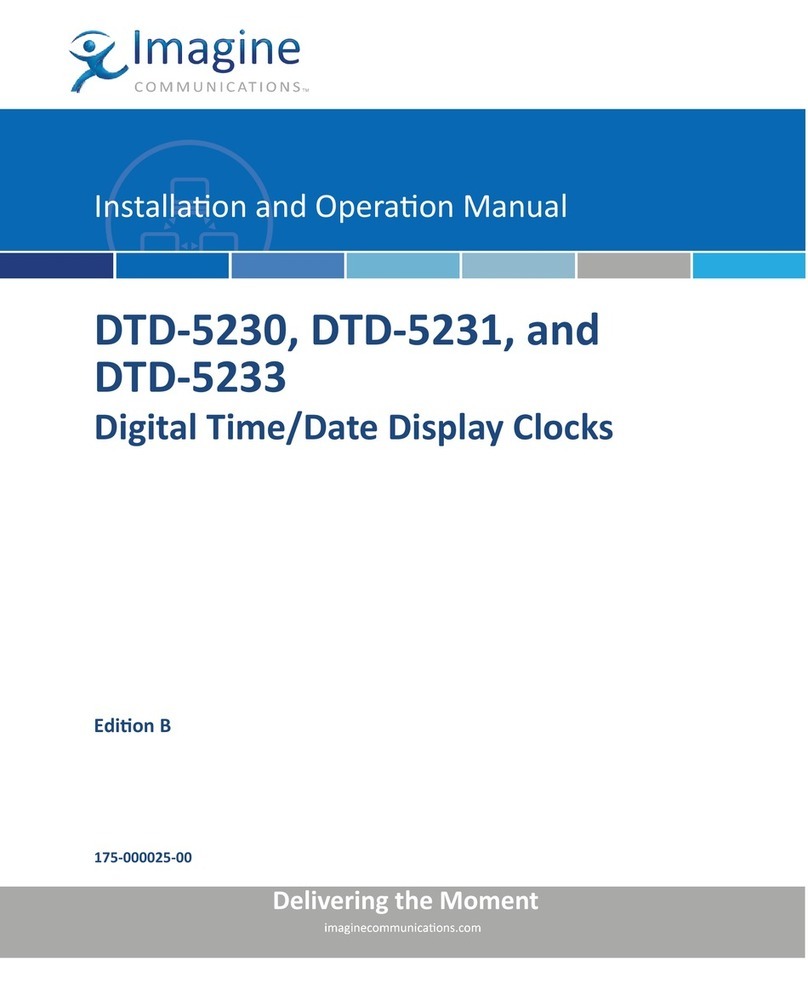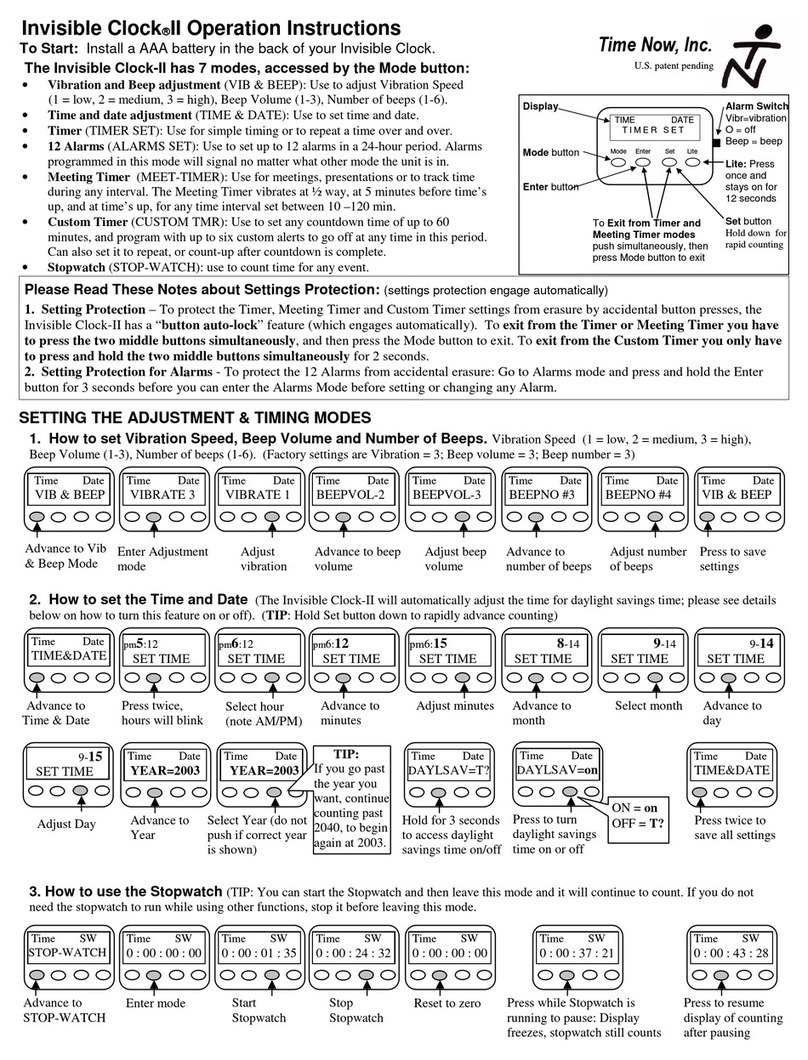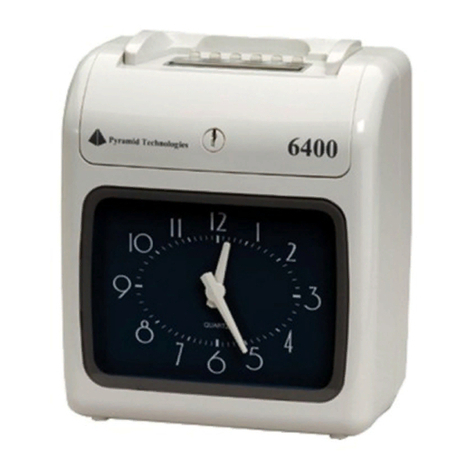Chelsea Boston Series Operation and maintenance manual

Chelsea's Boston Series
of
STRIKING AND NON-STRIKING CLOCKS
INSTRUCTIONS FOR OPERATION, CARE AND SERVICE
and WARRANTY
Chelsea Clock Company
284 Everett Avenue
Chelsea, MA 02150

STRIKING CLOCKS
SHIPSTRIKE — MECHANICAL
To Start:
The movement is self starting. After opening or unscrewing bezel (depend-
ing on whether screw or hinge type) wind both springs fully with the key
provided. Although full cycle is 8 days, it is recommended that rewind be
done weekly.
To Set:
Shipstrike clock may be set forward or backward. To set, remove bezel and
glass assembly and manually move the minute hand to correct time. The
hour hand should not be touched during the setting operation.
Regulate:
This clock was factory regulated to provide high accuracy in timekeeping.
If, due to influences in shipment, regulation is felt necessary, the following
precautions should be taken. Regulator tab is on the dial near the one-o'clock
position.
1.
Run clock for one week to stabilize timekeeping before attempting
regulation.
2.
Regulate only a small amount at one time.
3.
To make clock run faster, move regulator slightly toward F To make clock
run slower, move regulator slightly toward S.
Stop Strike: The striking mechanism may be shut off by moving the tab near the eleven
o'clock position away from the bell symbol. Do not shut off the strike while
the clock is striking.

SHIPSTRIKE — QUARTZ BATTERY
Your Quartz Shipstrike clock is powered by a AA size alkaline manganese
(1.5 IEC LR 6) battery, adequate to operate the unit for an average of
six months.
Movement Access:
1.
Unscrew the bezel and glass assembly from the front of the clock and
carefully set aside.
2.
Remove the dial and attached movement from the case, being careful
not to pull out or damage the small wires leading from the movement
to the striker mechanism in the rear of the case.
Setting Time:
Move minute hand forward to nearest hour. Align sweep second hand. Insert
battery. When clock starts, move minute hand forward to correct time.
DO NOT MOVE HANDS BACKWARD. DOING SO MAY CAUSE HANDS
TO LOCK.
Battery Installation:
Lift up battery cover (at 3 o'clock position) and insert battery negative side
first. Snap battery in place. Close battery cover.
Start/Stop Strike:
The green colored switch to switch the bell on and off is located at the
9 o'clock position. The switch can be activated by moving the green switch
to the right exposing the bell symbol. Turn off by moving the switch to the
!Aft Dn
not
shut off the strike while the clock is nhiminn

PLEASE NOTE:
Changing the battery, switching the chime on or any rapid
adjustment of the hands, may result in a random striking sequence. However,
the next striking sequence will be correct. IT IS AN INHERENT FEATURE
OF THIS CLOCK THAT THE STRIKING MAY OCCUR UP TO 30 SECONDS
BEFORE OR AFTER THE PRECISE TIME.
Regulate:
Your clock was timed at the factory and regulated to within three seconds
per week. There can be no further regulation.
THE SHIP'S BELL CODE
Telling time by the ship's bell has a romantic background that goes back hundreds of years.
It is based on the workday routine of the ship's crew. A ship at sea requires a constant watch
throughout the whole twenty-four hours of the day. To divide the duty, the day is broken up
into six watches of four hours each and the crew into three divisions, or watches. Each division
of the crew stands two four hour watches a day. In order to rotate the duty, so that a division
does not have the same watch day in and day out, the 4 to 8 watch in the afternoon is divided
into two watches known as dog watches. Here's how they are set up:

THE FIRST WATCH
8 P.M. to Midnight
THE MID-WATCH
Midnight to 4 A.M.
THE MORNING WATCH
4 A.M. to 8 A.M.
THE FORENOON WATCH
8 A.M. to 12 N.
THE AFTERNOON WATCH
12 N. to 4 P.M.
THE 1ST DOG WATCH
4 P.M. to 6 P.M.
THE 2ND DOG WATCH
6 P.M. to 8 P.M.
To apprise the crew of the time, the ship's bell was struck by the watch officer at half hour
intervals. By this method of timekeeping, eight bells mark 4, 8, and 12 o'clock.
SHIP'S BELL CODE
8 bells
12:00
4:00 8:00
1
bell
12:30
4:30 8:30
2 bells
1:00
5:00
9:00
3 bells
1:30
5:30 9:30
4 bells
2:00
6:00
10:00
5 bells
2:30
6:30
10:30
6 bells
3:00 7:00
11:00
7 bells
3:30 7:30
11:30
Eight bells denotes time to relieve the watch.
Hours-Even Numbers
Half Hours-Odd Numbers
With a
SHIP'S BELL CLOCK
you can
hear
the time.
You do not need to
see
it.

NON-STRIKING QUARTZ CLOCKS
Your Quartz clock is powered by an alkaline type battery adequate to operate the unit for an average
period of 20 months. However it is recommended that the battery be replaced every 12 months.
QUARTZ CLOCK
Start/Stop:
The clock may be started or stopped by the start/stop switch on the back of the
movement. If your clock does not have a start/stop switch, insert or remove the
battery to start or stop the clock.
Set Time:
1. Stop the clock.
2. Set the hands a few minutes ahead of actual time.
3. When set time coincides with actual time, start the clock.
Movement Access:
Newport Clocks & Navigator
1.
Unscrew the bezel and glass assembly from the front of the clock and set aside.
2.
Carefully remove the dial and attached movement from case.
3.
Insert battery in battery compartment in rear of movement, observing correct
polarity (i.e. (+) plus, ( –) minus). Your Newport Clock takes a AA-cell battery.
Your Navigator Clock takes a C-cell battery.
Desk Clocks and Display Instruments
Flag Officer — Unscrew back panel. Insert size "N" battery.
Weather Station — Pull out top portion of clock (do not unscrew case from plaque). Insert size "N" battery.
Captain's Desk Clock — Turn clock over and insert size "N" battery.

QUARTZ TIDE AND TIME CLOCK
Chelsea's Boston series presents a unique instrument combining both regular and tide time on a
single dial.
Reading the Clock:
A specially designed dial provides easy reading of the clock. The outer band is
Standard Time. The inner portion is color coded indicating phases of the tide. Two
red triangles at 3 and 9 o'clock positions represent mid-tides.
Hours past and hours to high tide can be read directly from this dial. The big red
hand near the dial face is the tide dial and revolves approximately once in 12 hours,
25 minutes. Strong winds and coastal conditions affect tide cycles, therefore periodic
resetting of the tide hand may be necessary.
Starting and Setting the Clock:
(First Mate Tide Teller start with direction #3).
1.
Unscrew the bezel and glass assembly from the front of the clock and set aside.
2.
Carefully remove the dial and attached movement from the case.
3.
Stop the clock by removing the battery.
4.
Manually set second hand to 12 o'clock position.
5.
Using the hand setting knob on the back of the movement (located on the right
side), set the hour and minute hands to the time of the next high tide.
6.
Using the set knob on the left side of the movement, turn the tide hand to the
high tide position on the dial.
7.
Using the hand setting knob (right side), set the clock backward to a few minutes
ahead of actual time.
8. When set time coincides with actual time, insert battery back in movement.

BAROMETERS
Your barometer is an instrument for measuring atmospheric pressure, or the weight of the air
surrounding us. Variations in atmospheric pressure are usually an indication of a coming change
in the weather. The barometer generally indicates changes 12 to 24 hours in advance. Therefore,
we watch the barometer to anticipate and forecast, not as an indication of current conditions.
Your barometer is an aneroid or holosteric type. That is, it measures atmospheric pressure
mechanically, without the use of fluids, by means of an evacuated hollow metallic diaphragm.
Change is atmospheric pressure on this diaphragm actuates the pointer or indicator hand on
the dial. It is not necessary to mount your barometer outdoors since it will operate properly inside.
Your barometer scale is graduated in inches, millibars and centimeters because these are the
standards for measuring atmospheric pressure. Normal atmospheric pressure at sea level is
approximately 30 inches. For many days, the variation and movement of the indicating hand
might be small.
The hand on the glass is a marker, to be set over the indicator hand when a reading is taken.
This marks the pressure at the time of the reading so that subsequent changes may be readily
noted.

Adjusting Barometer to Local Altitude:
(Cannot be adjusted above 3500 ft.)
When it left the factory, your barometer was adjusted to correct pressure at sea level, which
is the standard. Since atmospheric pressure decreases as altitude increases, you may need
to adjust your barometer if you are located at a higher altitude. This is done as follows.
1.
Call your local weather bureau for the present barometric reading.
2.
If the correction is less than 0.30 inches this is done by turning the setscrew
located just inside the hole in the back of the case with a small screwdriver.
3.
If the correction is 0.30 inches or more, the indicator hand must be
removed and placed at the correct reading. This is done by carefully lifting
it straight up from the hub, being careful not to bend the hand or arbor.
The hand is replaced with gentle, firm pressure of the thumb. A final
adjustment is then made as in 2 above.
Care of Your Boston Clock/Barometer Case:
Your clock case is constructed with a very high quality brass, then plated and lacquered for
appearance and protection. Chemicals contained in ordinary fingerprints or dust are harmful
to the finish.
To remove these harmful chemicals, we recommend you wipe your clock case with a soft cloth
weekly. A very mild detergent can be used if necessary. Treated with this care the lacquer seal
will not be broken and your clock case will retain its bright appearance indefinitely.

SERVICE
When/if sending your clock or barometer for service or refinish, pack the instrument with utmost
care and security and send to our factory facilities:
Service Department
Chelsea Clock Company Incorporated
284 Everett Avenue
Chelsea, Massachusetts 02150
Telephone: 617-884-0250

LIMITED NEW PRODUCT WARRANTY
Your new Boston instrument is warranted against defects in material and workmanship for two
years from date of original purchase. In the event of any such defect, return the instrument
postage prepaid, along with an explanation of the defect to the address set forth below and
it will be repaired or replaced at our option and our expense. Any defect or damage caused
by misuse, accident, tampering or negligence of the user is not covered by this warranty. Be
certain to carefully and securely pack the instrument for return, since we will not be respon-
sible for damage in shipment. The repaired or replacement instrument will be returned to you
postage prepaid.
All implied warranties covering merchantability, fitness or particular purpose, or otherwise are
limited in duration to two years from the date of original purchase. The repair or replacement
of any defect is the exclusive remedy under this warranty. In addition, the warranty shall not,
under any circumstances, be liable or responsible hereunder for consequential, incidental, indirect
or special damages.
Note that some states do not allow limitations on how long an implied warranty lasts, or the
exclusion or limitation of incidental or consequential damages, so the foregoing limitations or
exclusion may not apply to you. This warranty gives specific legal rights, and you may also
have other rights which vary from state to state.
CHELSEA CLOCK COMPANY, INCORPORATED
284 Everett Avenue, Chelsea, Massachusetts 02150
Telephone: 617-884-0250

CHELSEA CLOCK COMPANY
284 Everett Avenue — Chelsea, Massachusetts 02150
Telephone No. 800-435-2001
Table of contents
Other Chelsea Clock manuals
